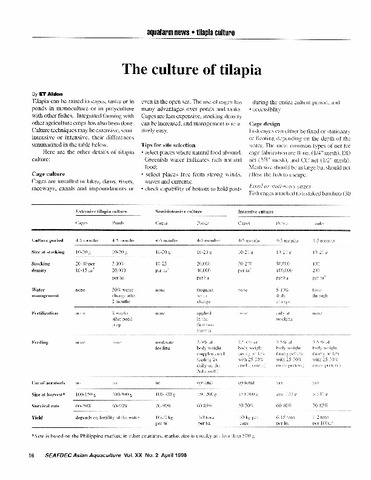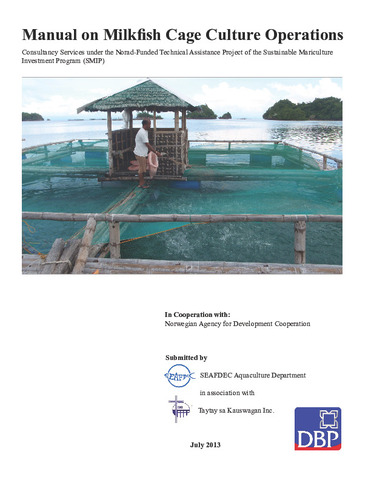Perlihatkan publikasi sederhana
Back to basics: Institutional and behavioral perspectives on the Taal Lake fish cage industry
| dc.contributor.author | Vista, Arvin B. | |
| dc.contributor.author | Norris, Patricia E. | |
| dc.contributor.editor | Cuvin-Aralar, Maria Lourdes | |
| dc.contributor.editor | Punongbayan, Raymundo S. | |
| dc.contributor.editor | Santos-Borja, Adelina | |
| dc.contributor.editor | Castillo, Lourdes V. | |
| dc.contributor.editor | Manalili, Eduardo V. | |
| dc.contributor.editor | Mendoza, Marlynn M. | |
| dc.date.accessioned | 2021-07-27T06:17:24Z | |
| dc.date.available | 2021-07-27T06:17:24Z | |
| dc.date.issued | 2005 | |
| dc.identifier.citation | Vista, A. B., & Norris, P. E. (2005). Back to basics: Institutional and behavioral perspectives on the Taal Lake fish cage industry. In M. L. Cuvin-Aralar, R. S. Punongbayan, A. Santos-Borja, L. V. Castillo, E. V. Manalili, & M. M. Mendoza (Eds.), Proceedings of the First National Congress on Philippine Lakes (pp. 134-144). Southeast Asian Regional Center for Graduate Study and Research in Agriculture (SEARCA). | en |
| dc.identifier.issn | 1656-8099 | |
| dc.identifier.uri | http://hdl.handle.net/10862/6131 | |
| dc.description.abstract | The practice of fish cage culture existed in Taal Lake in the 1970s but it only flourished in the late 1990s, degrading water quality and increasing fish kill incidences in cage areas. This paper analyzes the Taal Lake fish cage industry using the situation, structure, and performance (SSP) framework. The following interrelated goods were identified: (1) water quality as an incompatible use and common pool resource; (2) lake resource use as high exclusion cost (HEC) good; and (3) fish cage technology and labor as high transaction cost goods. Relevant stakeholders were identified and for each situation, the current institutions were described and alternative institutional structures were suggested, shifting externalities and costs from one group to another. The key to solving problems confronting stakeholders of Taal Lake s fish cage industry lies with the understanding of the sources of interdependence among the different goods and the industry s relationships with existing policy structures. Theoretical analyses showed the differences in income distribution among stakeholders, diminishing biodiversity, fish kill incidences, and the apparent ineffectiveness of the current institutional support system. Therefore, it is important to interpret and modify existing laws and regulations, determining who pays for fixed costs and whose preferences count. Development in the institutional structures may lead to future technological changes in the fish production system and improvement of water quality in cage areas. | en |
| dc.language.iso | en | en |
| dc.publisher | Southeast Asian Regional Center for Graduate Study and Research in Agriculture (SEARCA) | en |
| dc.subject | Externalities | en |
| dc.subject | Institution | en |
| dc.subject | Nutrient pollution | en |
| dc.subject | technological changes | en |
| dc.subject | Interdependence | en |
| dc.subject | Philippines | en |
| dc.title | Back to basics: Institutional and behavioral perspectives on the Taal Lake fish cage industry | en |
| dc.type | Conference paper | en |
| dc.citation.spage | 134 | en |
| dc.citation.epage | 144 | en |
| dc.citation.conferenceTitle | Proceedings of the First National Congress on Philippine Lakes | en |
| dc.subject.asfa | cages | en |
| dc.subject.asfa | cage culture | en |
| dc.subject.asfa | lakes | en |
| dc.subject.asfa | water quality | en |
Files in this item
| Files | Size | Format | View |
|---|---|---|---|
|
There are no files associated with this item. |
|||
Publikasi ini ada di koleksi berikut
-
LakeCon2003 [49]
Proceedings of the First National Congress on Philippine Lakes



